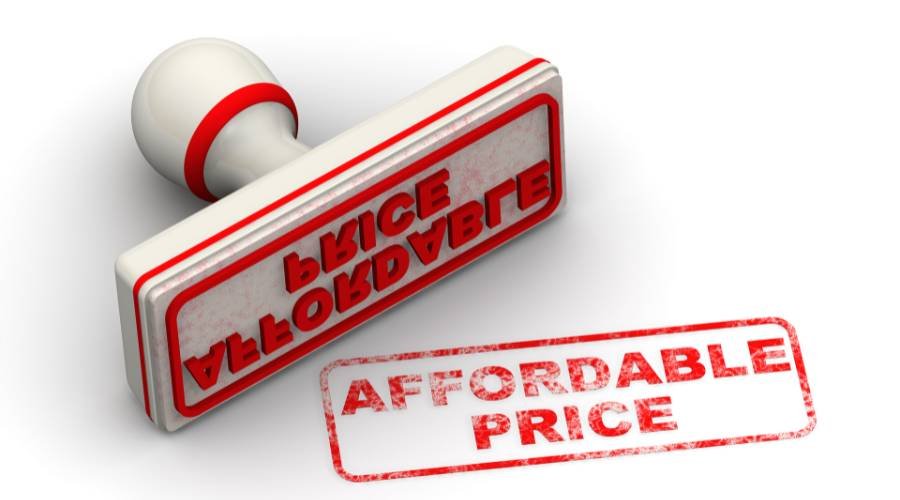In today’s digital world, small and medium-sized businesses (SMBs) face tough competition for attention. They wonder if content marketing can help them stand out and succeed. Many Australian entrepreneurs are trying to figure this out in the fast-changing marketing scene.
Content marketing has become a key tool for SMBs. It’s a cost-effective way to connect with their audience, show they’re experts, and grow in a sustainable way. By sharing valuable content, SMBs can build strong relationships, engage with customers, and become a go-to source in their field.
Key Takeaways
- Content marketing helps SMBs connect with their audience, establish authority, and drive growth.
- It can lead to increased traffic, higher engagement, and ultimately, more sales for SMBs.
- Content marketing tools and strategies can enhance online visibility and build a positive reputation for clients.
- Engaging content like infographics, blog posts, and videos can foster customer loyalty and repeat business.
- Content marketing is a cost-effective alternative to traditional advertising, enabling SMBs to reach a wider audience.

Understanding the Power of Content Marketing
Content marketing is a key tool for small and medium-sized businesses (SMBs). It helps them build their brand, attract their audience, and increase sales. By sharing valuable content, SMBs can gain trust, become authorities, and grow their customer base. This also boosts their online presence and SEO.
Benefits of Content Marketing for SMBs
Content marketing brings many benefits to SMBs, including:
- Brand Awareness and Authority: High-quality content helps SMBs be seen as experts. It builds trust and increases brand recognition.
- Lead Generation and Engagement: Content like blog posts and videos attracts and engages potential customers. It helps them move through the sales process.
- Cost-Effective Marketing: Content marketing is cheaper than traditional ads. It’s a cost-effective way to reach the target audience.
- Real-Time Analytics: Digital content marketing lets SMBs track their campaigns. They can adjust their strategies based on performance.
Challenges Faced by SMBs in Content Marketing
Despite its benefits, content marketing poses challenges for SMBs, such as:
- Limited Resources: SMBs face challenges due to smaller teams and budgets. It’s hard to keep up with quality content.
- Continuous Content Creation: Creating a steady flow of engaging content is time-consuming and resource-intensive.
- Lack of Unified Tactics: SMBs may struggle to create a cohesive content strategy. It must align with their business goals.
To overcome these challenges, SMBs need to effectively use content marketing. This will help them achieve meaningful results for their businesses.
Developing a Winning Content Marketing Strategy
Creating a successful content marketing strategy for small and medium-sized businesses (SMBs) requires several steps. First, define your content marketing goals. These could be to strengthen customer relationships, boost sales, or enhance SEO. Next, identify your target audience and understand their needs and challenges.
Defining Your Goals and Target Audience
When setting your content marketing goals, think about improving revenue, boosting sales, and getting high-quality leads. Also, aim for more website traffic, better brand perception, and higher SEO rankings. Reducing marketing costs and increasing social media engagement are also important.
To find your target audience, collect data on age, gender, education, income, and interests. Use customer feedback and create buyer personas to understand what your audience likes and needs.
Conducting a Competitor Analysis
Doing a competitor analysis shows what content works in your industry. By looking at your competitors’ content, you can spot gaps and create unique content. A content audit helps you see how your current content is doing and guides your future plans.
“70% of marketers are actively investing in content marketing.”
By following these steps, you can craft a winning content marketing strategy. It will meet your business goals, connect with your audience, and stand out from competitors.
Choosing the Right Content Types
Small and medium-sized businesses (SMBs) face a big challenge in content marketing. They have many options, like blog posts, videos, and quizzes. But, picking the right content for your audience is key to success.
Think about what you want your content to do. For example, whitepapers are detailed and focus on leadership. E-books are shorter and more visual. Each type has its own role, so choose wisely.
Also, consider what your audience likes. Infographics and videos grab attention and explain complex ideas simply. Text-based articles and newsletters are better for detailed info or updates.
The best strategies mix different content types. Try new formats and see what works. This way, you can make content that really connects with your audience.
| Content-Type | Description | Key Benefit |
|---|---|---|
| Blog Posts | Informative and search-engine-friendly articles | Improve website ranking and shareability |
| Videos | Engaging visual content | Increase audience engagement and retention |
| Infographics | Visual representations of complex information | Enhance understanding and shareability |
| Webinars | Interactive online educational events | Provide education and generate leads |
| White Papers | Authoritative, in-depth guides on industry topics | Establish thought leadership and capture leads |
Creating a Content Calendar for Consistency
For small or medium-sized businesses, keeping a steady content marketing plan is key. A content calendar is a great tool for this. It lets you plan and schedule your content, making sure your audience gets regular, interesting posts.
Having a content calendar brings many benefits. It helps you plan and carry out your content strategy better. It also makes sure your content meets your audience’s needs and interests. Plus, it boosts your team’s work, making them more productive and collaborative.
Key Elements of an Effective Content Calendar
- Clearly defined content types and topics
- Scheduled publication dates and times
- Assigned content creators and contributors
- Outlined content promotion and distribution channels
- Periodic content performance reviews and optimization
With these elements, your content calendar will keep your small business consistent. You’ll always have valuable, engaging content ready for your audience.
“A well-crafted content calendar can save time, broaden team bandwidth, and improve cross-functional collaboration, leading to better content oversight and more strategic alignment with organizational marketing objectives.”
Starting a content calendar is a big step for small businesses wanting to boost their content marketing. It makes planning, creating, and sharing content easier. This leads to more engagement, loyal customers, and growth for your business.

Repurposing Long-Form Content for Maximum Reach
For small and medium-sized businesses, it’s key to make your content reach more people. Repurposing long-form content into different formats is a smart move. This way, you can keep sharing your best content and attract new followers. By turning blog posts into infographics, podcasts, or video clips, you can share your insights on many platforms. This boosts your content marketing efforts.
Examples of Content Repurposing
Repurposing content adds value and helps you reach more people. For example, you can break down a hit blog post into social media posts. This makes it easy for your audience to engage with your content. Or, you can take the main points from a webinar and make them into an eBook or a infographic.
Doing this also helps your SEO. By creating more content around a single keyword, you become more visible online. This means more people will find your website when they search for that keyword.
| Content Format | Repurposing Examples |
|---|---|
| Blog Posts |
|
| Webinars |
|
| Case Studies |
|
By repurposing your content, you can make your small business marketing better. You’ll reach more people and make your brand message stronger. This works across many formats and channels.
Leveraging Content Marketing to Establish Authority
Small and medium-sized businesses (SMBs) face tough competition. They need to show they’re experts in their field. Content marketing is a great way for them to do this. By sharing valuable content, they can prove their knowledge and care for customers.
Studies show that a brand’s authority is linked to website visitors. This means people see the brand as a top name in its field. Building trust and credibility is key to being seen as an expert.
It’s important for businesses to keep in touch with their audience through content. This helps build a strong, respected brand. With a solid content marketing plan, SMBs can charge more and keep customers coming back.
To become content marketing authorities, SMBs should make high-quality content. It should solve problems and offer new insights. Using SEO can help more people find their content, making the brand a leader.
Using different content types like newsletters and podcasts helps build authority. By engaging with their audience, SMBs can show they’re true experts. This builds trust over time.
In a world where trust in brands is falling, content marketing is a chance for SMBs to shine. They can become content marketing authority, industry expertise, and thought leadership in their small business branding.
content marketing
In today’s digital world, content marketing is key for small and medium-sized businesses (SMBs). It helps them grab their audience’s attention, show they know what they’re talking about, and get real results. This strategy is about sharing useful, interesting content that gets people talking, not just trying to sell them something.
Most marketers, including those from SMBs, use content marketing. Businesses everywhere, from small shops to big government agencies, see its value. It helps them sell more, save money, and keep customers coming back for more.
The secret to good content marketing is to mix it with other marketing efforts. This includes email, social media, SEO, PR, PPC ads, and more. By doing this, businesses can make a strong plan that really speaks to their audience and shows results.
AI is also changing content marketing for the better. It helps make content faster and smarter. AI can suggest topics, write blog posts, and share content automatically. This makes content marketing easier and more effective for SMBs.
At its heart, content marketing is about building trust and lasting relationships with customers. By sharing great, useful content, SMBs can stand out, attract and keep customers, and grow their business in the long run.
| Content Marketing Statistics | Value |
|---|---|
| Businesses with blogs receive 67% more leads than those without | 67% |
| B2B marketers who use content marketing experience 67% more leads | 67% |
| Branded videos are credited by 88% of individuals for persuading them to make a purchase | 88% |
| 95% of online purchases are powered by video content marketing | 95% |
| 80% of individuals prefer to read high-quality, compelling content over advertisements | 80% |
| 70% of customers prefer to learn about a company or product through content as opposed to traditional advertisements | 70% |
| 60% of consumers prefer to get to know a brand through content | 60% |
| 54% of consumers want to see more video content from businesses they support | 54% |
By using content marketing, SMBs can really connect with their audience, build loyalty, and grow their business. Whether it’s through videos, blog posts, or social media, the possibilities for small and medium business are endless.
Maximizing Cost-Effectiveness with Content Marketing
Small and medium-sized businesses (SMBs) face a changing marketing world. Content marketing is a cost-effective solution. It helps them reach and engage customers without spending a lot.
Content marketing is cheaper than traditional ads. It lets SMBs attract more people and get leads without spending a lot. This makes it great for businesses with small budgets.
But, making content marketing work well isn’t easy. Many marketers struggle to plan their content. They find it hard to make quality content that people want to see.
To do better, SMBs need a solid content plan. They should focus on making content that really speaks to their audience.
Repurposing long-form content can also help. Many businesses turn blog posts and videos into different formats. This saves time and makes their content reach more people.
Using automation and outsourcing is also key. Automation tools help make content marketing more efficient. And, hiring professionals can make content better without needing to do it all in-house.
By using these strategies, SMBs can make the most of content marketing. They can grow their business, get more people to know about their brand, and see a good return on investment. Tracking performance helps them keep improving their content marketing efforts.
Overcoming Content Complacency with Fresh Ideas
The world of content marketing is always changing. Small and medium-sized businesses (SMBs) can easily get stuck in a rut. When your content starts to feel the same, it can lose its appeal to your audience. To stay ahead, SMBs need to find new and exciting ways to engage their audience.
Frequently Asked Questions (FAQs)
One great way to keep your content fresh is to answer the frequently asked questions (FAQs) your customers have. FAQs offer quick solutions to common problems. By updating your FAQs regularly, you show your audience you’re knowledgeable and care about their needs.
Revamping Sales Collateral
Another smart move is to update your sales materials. As your business grows, so should your marketing. Refreshing your brochures, presentations, and product sheets keeps your message current. This helps you showcase your latest offerings and maintain a professional image.
For SMBs, it’s key to keep finding new ways to connect with your audience. By trying out new ideas like FAQs and updated sales materials, you can avoid the trap of content complacency. This keeps your small business content marketing and medium business content marketing efforts fresh and effective.
Conclusion
Content marketing is a key tool for small and medium-sized businesses in Australia. It helps them stand out, become authorities, and grow without spending a lot. By creating a solid content marketing plan, using the right content, and staying consistent, businesses can reach their audience and outdo competitors.
Studies show content marketing’s huge potential for all businesses. Over 80% of B2C companies aim to boost customer loyalty with content. And 64% of B2C companies are all in on content marketing. This approach can cut costs by 80% and bring in three times more leads than traditional marketing.
By using the tips from this article, Australian SMBs can use content marketing to become industry leaders. They can get quality leads, increase website visits, and strengthen customer bonds. Remember, content marketing is about making valuable, engaging content that meets your audience’s needs. With the right strategy and ongoing improvement, content marketing can transform your business in Australia.
FAQ
What are the key benefits of content marketing for small and medium-sized businesses?
Content marketing helps SMBs in many ways. It boosts brand awareness and authority. It also attracts leads at a low cost. Plus, it meets audience needs and offers real-time analytics.
What are the unique challenges that SMBs face in their content marketing efforts?
SMBs struggle with limited resources and the need for constant content. They also face challenges in using unified tactics. Overcoming these is key to successful content marketing.
How can SMBs develop a winning content marketing strategy?
To win in content marketing, SMBs need to set clear goals. They must know their audience and analyze competitors. Choosing the right content types is also crucial.
What are the best content types for SMBs to leverage?
SMBs should use blog posts, social media, videos, and infographics. Interactive content like quizzes is also good. The goal is to match content with audience preferences and provide value.
How can SMBs maintain consistency in their content marketing efforts?
A content calendar is essential for SMBs. It helps plan and execute content strategy. It outlines when and what to publish, ensuring relevance and a steady flow of content.
How can SMBs maximize the reach and impact of their content?
Repurposing content is a great strategy. Turning blog posts into infographics, podcasts, or videos can extend content lifespan. It also reaches new audiences.
How can content marketing help SMBs establish authority and thought leadership?
Consistent creation and sharing of valuable content shows expertise. It builds trust, credibility, and a positive reputation. This is key for establishing authority and thought leadership.
What are the cost-effectiveness advantages of content marketing for SMBs?
Content marketing is cheaper than traditional ads. It allows SMBs to reach more people and generate leads without breaking the bank. It’s a cost-effective strategy for businesses with tight budgets.
How can SMBs overcome content complacency and maintain a fresh approach?
SMBs can find new content ideas, like FAQs and updated sales collateral. This provides immediate value and shows their offerings are evolving. Always looking for new ways to engage the audience is key to staying competitive.




